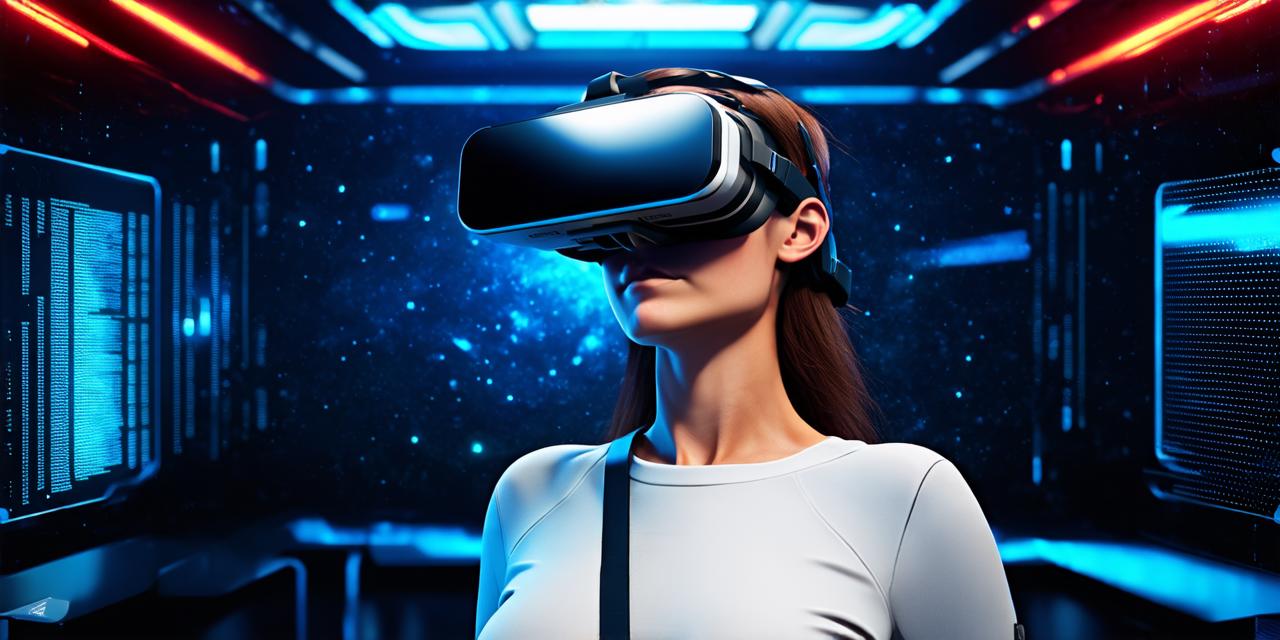Hardware Components
Display Devices
The display device is a critical component of any VR system. There are two main types of display devices used in VR:
- Head-mounted displays (HMDs): These devices are worn on the head and provide a 360-degree view of the virtual environment. HMDs can be either desktop or mobile devices, with the former offering higher resolution and more advanced features.
- Projected displays: These devices project the virtual environment onto a large screen in a room, providing a more immersive experience for multiple users.
Input Devices
Input devices are used to track the user’s movements and interactions within the virtual environment. There are several types of input devices commonly used in VR development:
- Hand controllers: These devices are worn on each hand and provide tracking for hand and finger movement, as well as haptic feedback.
- Foot pedals: These devices are used to track foot movement and can be used in conjunction with hand controllers or other input devices.
- Motion capture suits: These advanced input devices use sensors and cameras to track the user’s movements throughout their body, providing a more realistic representation of the user within the virtual environment.
Computing Requirements
The hardware requirements for VR development can vary depending on the complexity of the application and the target platform. However, there are some key factors to consider when selecting hardware:
- GPU: A powerful graphics processing unit (GPU) is critical for rendering high-quality visuals in real-time.
- CPU: The central processing unit (CPU) handles the application logic and user input.
- Memory: Sufficient memory is necessary for storing textures, models, and other assets required by the application.
- Storage: Depending on the size of the application and the target platform, storage requirements may vary.
Software Components
Game Engines
Game engines are software frameworks that provide a set of tools and resources for creating VR applications. Some popular game engines used in VR development include:
- Unity: A cross-platform game engine that supports both 2D and 3D development, as well as VR development.
- Unreal Engine: A high-performance game engine that provides advanced graphics and physics capabilities, as well as support for VR development.
- Havok: A middleware framework that provides a set of tools for creating realistic physics simulations in VR applications.
Software Development Kits (SDKs)
SDKs are software libraries that provide developers with access to the underlying technology and functionality of a platform or device. Some popular SDKs used in VR development include:
- OpenVR: An open-source SDK for developing VR applications on the Oculus Rift and other platforms.
- Unreal Engine SDK: A set of tools and resources for creating VR applications using Unreal Engine, including support for motion capture and advanced graphics capabilities.
User Experience Design
User experience (UX) design is a critical component of VR development, as it determines how users interact with the virtual environment and how immersed they feel within it. Some key principles to consider when designing UX for VR applications include:
- Intuitive Controls: VR controls should be easy to understand and use, with clear feedback provided to the user.
- Easy Navigation: Users should be able to easily navigate the virtual environment, with clear landmarks and signage to guide their way.
- Immersive Environments: The virtual environment should feel as realistic and immersive as possible, using techniques such as 3D audio and haptic feedback to enhance the user’s experience.
Best Practices for VR Development
Optimization for Performance
Performance is critical in VR development, as even small delays or frame rate drops can cause motion sickness and reduce the overall immersion of the experience. Some best practices for optimizing performance include:
- Reducing Polygon Count: Reducing the number of polygons used in 3D models can help improve performance, particularly on lower-end hardware.
- Using Texture Compression: Using texture compression techniques such as LOD (level of detail) and mip mapping can help reduce the size of textures and improve loading times.
- Minimizing Draw Calls: Minimizing the number of draw calls made by the application can help reduce the overall load on the GPU.
Testing and Iteration
Testing is an essential part of VR development, as even small bugs or issues can have a significant impact on the user’s experience. Some best practices for testing and iteration include:
- Conducting User Testing: Conducting user testing with real users can provide valuable feedback and insights into how the application is performing and what areas need improvement.
- Iterative Development: Using an iterative development approach, where features are continually tested and refined based on user feedback, can help ensure that the final product meets the needs of the target audience.
Case Studies
“Beat Saber” by Beat Games
“Beat Saber” is a popular VR rhythm game that has been praised for its intuitive controls and immersive environments. The game’s development team used several best practices to optimize performance, including reducing polygon count and using texture compression. They also conducted extensive user testing to ensure that the final product was intuitive and easy to use.
“Job Simulator” by Oculus VR
“Job Simulator” is a VR application that allows users to simulate various jobs in a virtual environment. The development team used motion capture technology to track the user’s movements within the virtual environment, providing a more realistic representation of the user. They also used an iterative development approach, continually refining the game based on user feedback.
Conclusion
Virtual reality is a rapidly evolving technology that offers developers unique opportunities to create innovative and immersive experiences. Understanding the operating mechanisms of VR hardware, software, and user experience design can help developers create more effective and impactful applications. By following best practices for optimization, testing, and iteration, developers can ensure that their VR applications meet the needs of their target audience and provide a positive user experience.
